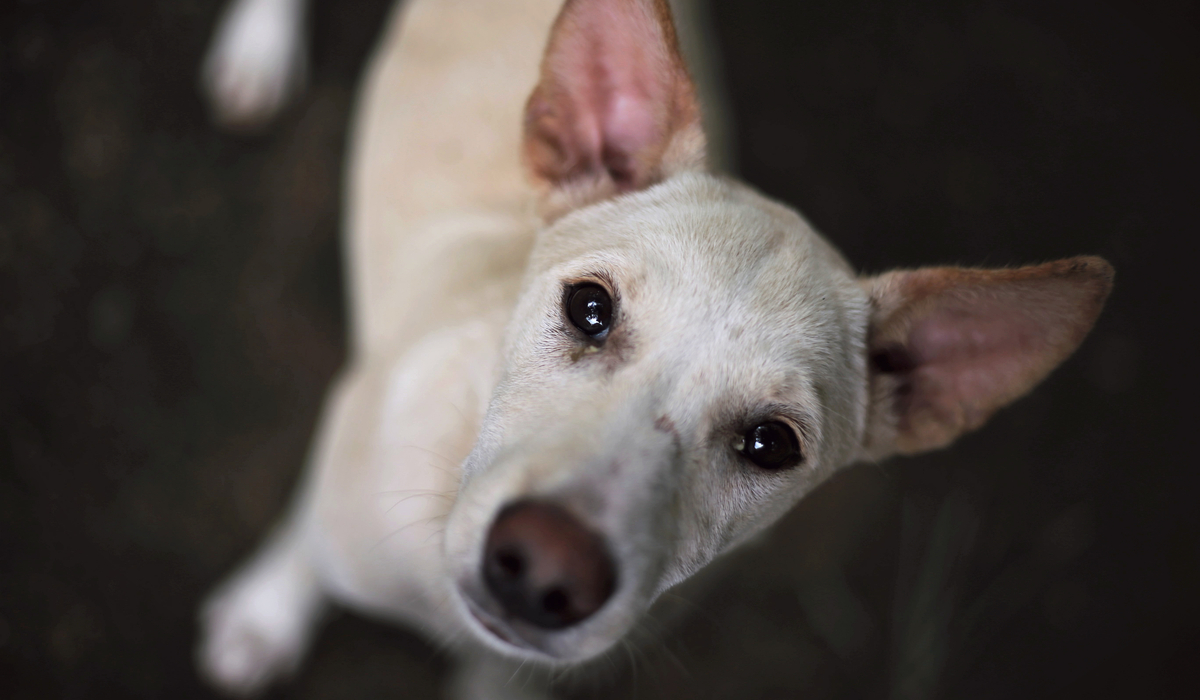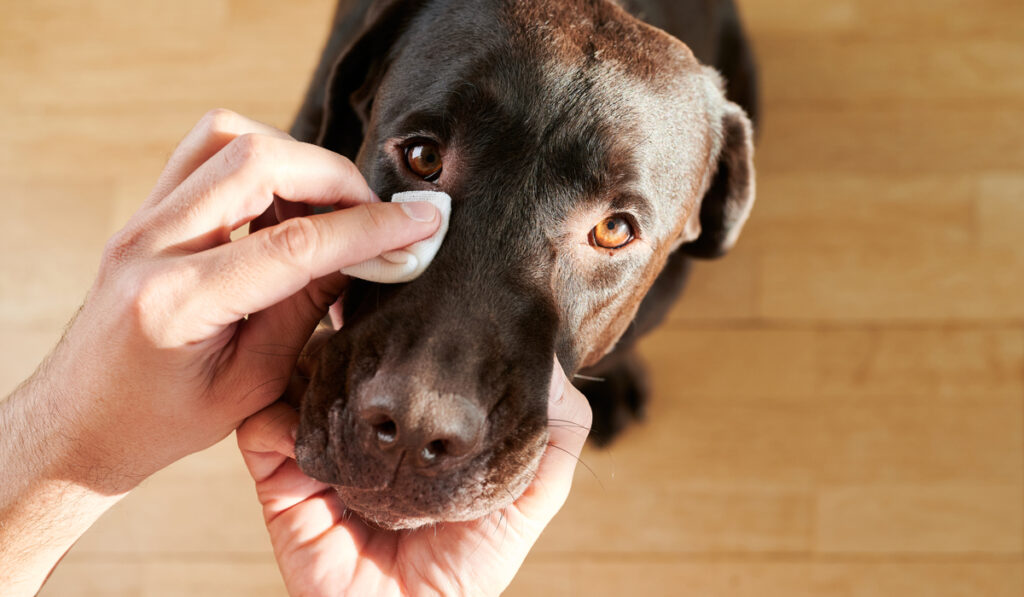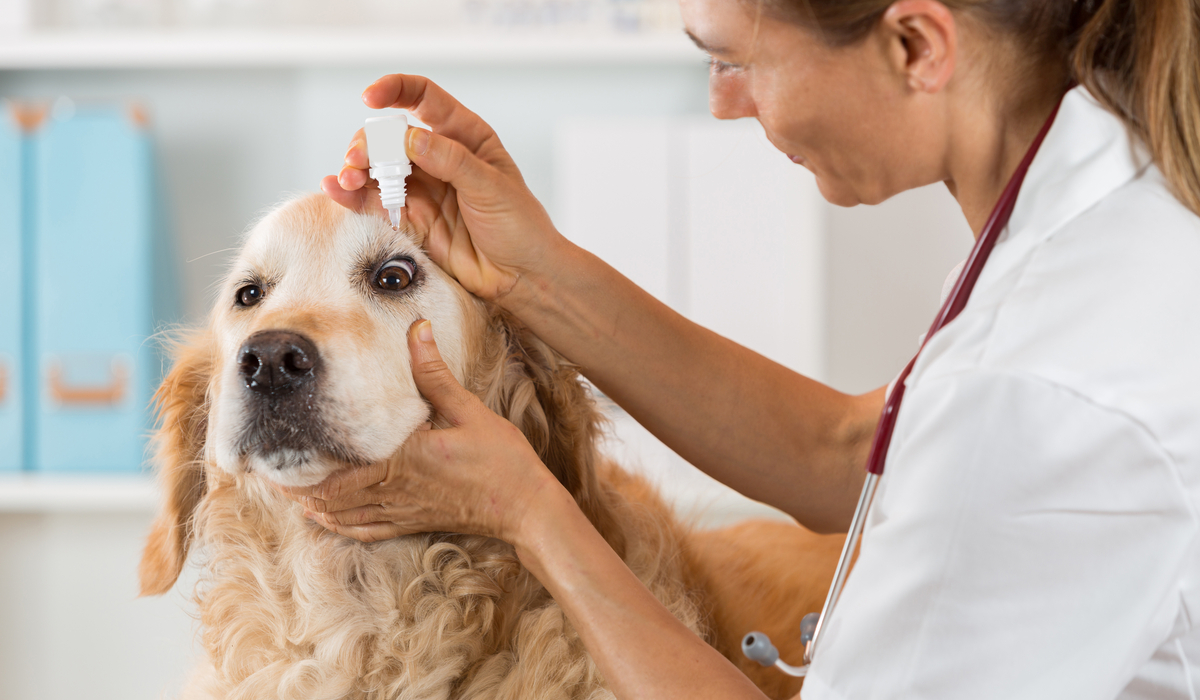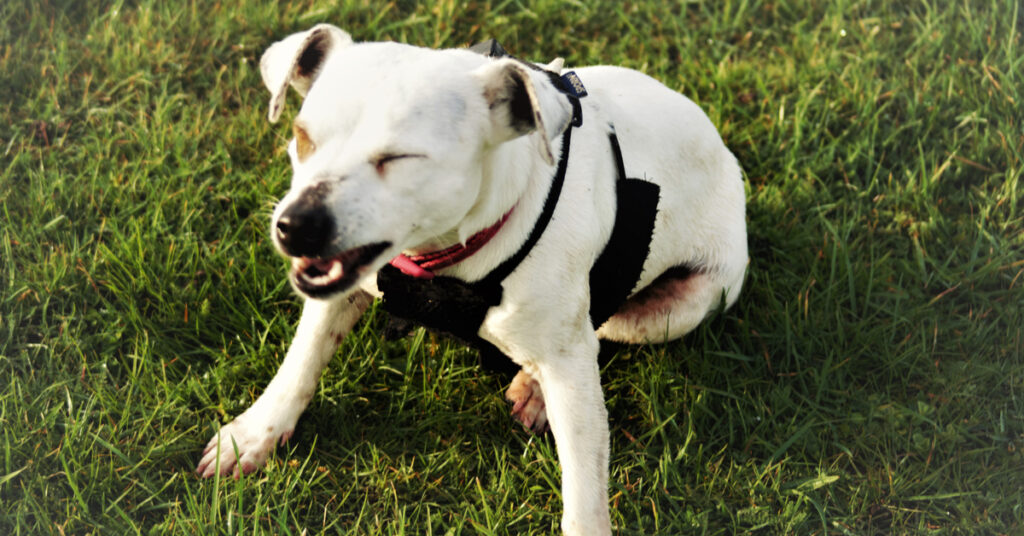Dog owners the world over will tell you that their dog feels emotions, and when you look into your dog’s eyes, there’s no doubt in your mind that there’s a lot going on in there. Dogs do seem to know when you’re sad, but do they cry like humans do when they are sad?
If you ask me, dogs are definitely capable of feeling and expressing emotion, but not in the same way humans do. Their eyes can certainly produce tears, but dogs don’t cry for the same reasons you do. Let’s take a look at what canine tears mean and when to be worried about a medical issue.
Why Is My Dog Crying?

Dog’s eyes can produce tears, but insofar as we are capable of knowing, they don’t seem to be producing emotional tears. They most certainly are capable of expressing emotion, and they typically will express sadness by whimpering or whining or hiding their face. They just don’t cry when they’re sad.
It is believed that humans are really the only animal that will shed tears of emotion. Dog crying for emotional reasons takes the form of whimpering and other similar vocalizations. When you hear them doing that, you won’t see them shedding those emotional tears.
Aside from the vocalisations, a sad dog might also lack energy and show no interest in things they normally love like their favorite toys. So why exactly does your dog cry? Well, there are a number of reasons.
The biological function of your dog’s tear ducts is similar to your own. Tears are useful for washing away anything that might get in your eyes such as dust or some other kind of irritant. That may be why your dog is crying, but there are some medical issues that can cause them to have watery eyes.
Medical Issues that Cause Dog Crying

If dogs use body language and vocalizations to express their emotions, then why exactly do they cry? While we might be touched to think that a dog cries when it is sad, the truth is that your dog’s tear ducts don’t actually spill out tears like they do in humans.
Instead, the liquid of the tear ducts is drained into the nasal cavity. That’s why when a dog cries, it’s really signaling some kind of medical issue, and that’s why it’s vital to understand what your dog crying really means so you can help provide him with what he needs.
There’s not just one reason why your dog cries, and for that reason, it’s best to have him checked by your veterinarian to determine the exact medical condition that may be causing excessive tearing.
The following are several common medical conditions that can cause your dog to cry or get “eye boogers“.
Blocked Tear Ducts
When your dog has tears falling down from his eyes, it’s something called epiphora. You might not always notice epiphora by seeing the tears themselves, but you might notice tear stains in your dog’s eye area.
Epiphora is a symptom rather than a diagnosis, and it indicates that your dog’s tear ducts are blocked. That can be caused by a number of problems including an infection in his sinuses or nasal cavity, parasites, and trauma to the bones in his face or nose.
If epiphora goes on for a long time, it can result in skin irritation and discoloration of the fur in your dog’s eye area. To determine exactly what might be causing the blockage, you need to have your pooch seen by your vet.
Eye infection
Another cause of dog crying is an eye infection. If this is the case, you might also notice that your dog’s tears also contain mucus or blood. This can also make them appear yellowish in color.
Additionally, if your dog has an eye infection, you’ll likely see some swelling and irritation in or around his eyes. If you suspect he has an eye infection, you’ll want to get him checked promptly by your veterinarian since this can lead to more serious problems that can compromise his sight.
Corneal ulcer

Another cause of excessive tearing is a corneal ulcer. You might also hear this called a scratched cornea. This sometimes happens in people too, and it’s extremely painful. The cornea is a transparent membrane covering the eyeball, and when dogs are playing rough with other dogs or while exploring thick brushes, it’s very easy to scratch their cornea.
If a scratched cornea is the cause of your dog’s watery eyes, you might first notice it after he has been playing intensely. You’ll also probably see a few other symptoms like excessive blinking, pawing at the affected eye, or even swelling around the eye.
If you see these symptoms, get your dog checked out by the veterinarian as soon as possible since treating a scratched cornea can be complicated, and the longer it goes on, the more severe the damage can be.
Conjunctivitis
Yet another cause of excessive tearing in dogs is something called conjunctivitis. The conjunctiva is the pink tissue you see inside the eye and in the corner of the eye. When that tissue becomes inflamed, it’s called conjunctivitis.
The pink membranes become inflamed and that causes a discharge from the eye, swelling, and excessive blinking. Your dog may also paw at his eyes. Conjunctivitis can cause blocked tear ducts as well.
Conjunctivitis is easy to treat, particularly if you’re able to catch it early on, and that’s why you want to see the vet as soon as you notice symptoms.
Allergies

Just like with humans, allergies in dogs can cause watery eyes. Moreover, just like with humans, there are many different things your dog can be allergic to including certain foods, pollen, dust, smoke, and different chemicals or scents.
To determine exactly what your pup is allergic to, your veterinarian will need to run some tests, and these can sometimes take a long time. In the meantime, you might try to determine the cause by noting any changes you’ve made to your dog’s diet or if there are any other changes in his routine.
Sometimes you can determine the allergen so that you can eliminate the cause of your dog’s watery eyes without having to wait for the results of the testing. It’s still a good idea to finish the testing so you know exactly what your dog is allergic to and avoid it in the future.
Entropion
Entropion is a medical condition that can be genetically inherited or develop as a secondary disease over the course of your dog’s lifetime. In either case, it results in your dog’s eyelids rolling inward so that his eyelashes actually rub against his cornea.
It causes excessive tearing, tear stains since it occurs over an extended period of time, and it can result in a corneal ulcer. It can also affect both the upper and lower lids, and it can occur in both of his eyes.
Because it’s genetically inherited, it’s seen more frequently in certain breeds of dogs like pugs, boxers, and English bulldogs. In young puppies under three months old, it can be treated with eyelid tacking to force the eyelids into a normal position. In older dogs, however, entropion requires surgery to treat.
Dirt or Dust
It’s also possible that your dog’s excessive tearing is simply the result of getting something like a speck of dirt or dust in his eye. It’s easy for him to get dirt on his eyelashes while he’s out in the yard.
This is actually exactly why tears are helpful, and usually, it’s harmless. Your dog cries for a while and that washes the foreign object out of his eye. If the excessive tearing persists, however, it might be something that is actually stuck in his eye or he might have a scratched cornea.
If the tears don’t stop, you’ll want to seek advice from your veterinarian. When it comes to eye health, it’s better to be safe rather than sorry. You don’t want to ignore what your dog needs to avoid any serious health issues.
Final Thoughts

Do dogs cry? Yes, just not through tears. There are many different things that can cause watery eyes in dogs, and while we might think it’s related to a dog’s emotions, the reality is that it’s more likely a medical issue that requires some kind of treatment. This is particularly true if it persists for more than a few hours since time is of the essence when it comes to serious conditions of the eye.
That doesn’t mean your dog doesn’t have emotions, it just means he doesn’t cry emotional tears. He just shows his emotions using body language and vocalizations rather than by crying. So if your dog is crying you a river, it’s time to swing by the vet’s office and see what all the tears are about!

